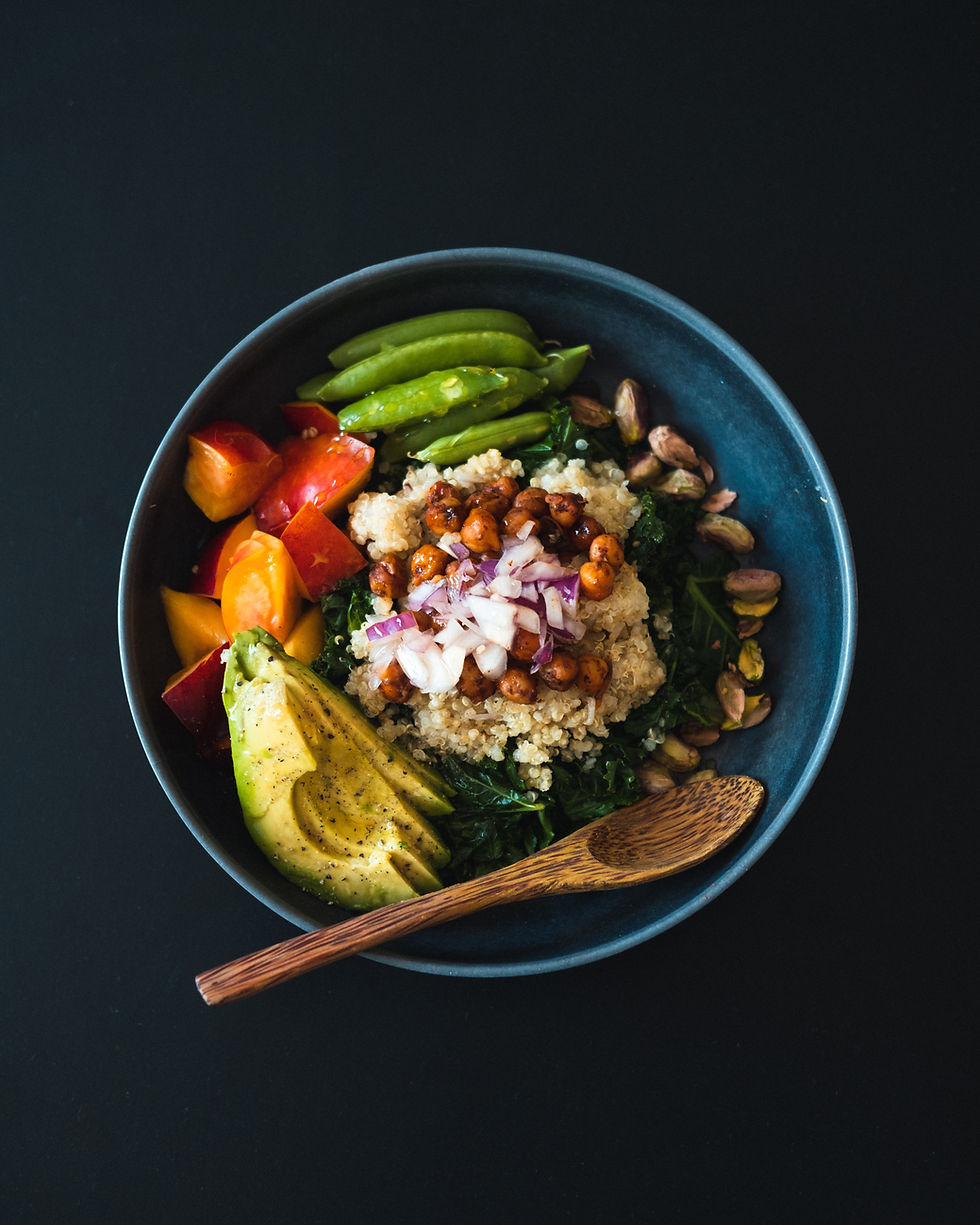Steps to Build a Balanced and Nutritious Diet
- Dianne WARD
- Feb 17
- 4 min read
Building a balanced and nutritious diet is essential for maintaining good health and well-being. In today's fast-paced world, it is easy to overlook the importance of eating well. With the right approach and understanding of nutrition, you can enjoy delicious meals that nourish your body. Here are some effective steps to help you create a balanced and nutritious diet.
Understanding Healthy Eating
Healthy eating involves choosing a variety of foods in the right proportions. This means including plenty of fruits, vegetables, whole grains, and lean proteins. By doing so, you not only get the essential nutrients your body needs but also enhance your overall health.
One important statistic to consider is that only 1 in 10 adults consume enough fruits and vegetables daily. This highlights the need to incorporate more plant-based foods into your meals. Aim for at least five portions of fruits and vegetables every day. This can be a great way to boost your nutrient intake without adding excess calories.

Create a Balanced Plate
The "balanced plate" model is a simple way to visualize how to compose your meals. The idea is to divide your plate into sections that represent different food groups.
Half your plate should consist of fruits and vegetables. This ensures you get a good mix of vitamins, minerals, and fiber.
One-quarter should be dedicated to lean proteins such as chicken, fish, legumes, or tofu. Proteins play a crucial role in muscle repair and satiety.
The remaining quarter should be whole grains like brown rice, quinoa, or whole-wheat pasta. Whole grains are rich in fiber and essential nutrients.
By following this model, you can create balanced meals that are both satisfying and nutritious.

Be Mindful of Portion Sizes
Portion control is vital for maintaining a healthy diet. Overeating, even healthy foods, can lead to weight gain and other health issues. To better understand portion sizes, consider the following tips:
Use smaller plates to help control how much food you serve yourself.
Familiarize yourself with standard serving sizes. For example, a cup of cooked pasta or rice is roughly the size of a fist.
Practice mindful eating by slowing down and savoring your food. This can help you recognize when you are full.
Research shows that people often underestimate portion sizes, especially when dining out. Be aware of this tendency and make conscious choices regarding how much you eat.
Incorporate a Variety of Foods
Eating a variety of foods not only keeps meals exciting but also ensures you receive a broad spectrum of nutrients. Consider these strategies:
Rotate your fruits and vegetables weekly. For example, try spinach and strawberries one week, and kale and blueberries the next. Different foods provide unique vitamins and minerals.
Experiment with different cooking methods. Grilling, steaming, and roasting can bring out different flavors in the same ingredient.
Explore international cuisines. Trying to incorporate Mediterranean, Asian, or Latin American dishes can introduce you to new spices and food combinations.
Variety is not just the spice of life; it is essential for optimal health.
Focus on Whole Foods
Whole foods are minimally processed and full of nutrients. Incorporating more of them into your diet can greatly benefit your health. Here are some practical tips:
Shop the perimeter of the grocery store, where fruits, vegetables, meat, and dairy are typically located. This tends to be the section with the least processed foods.
Read food labels carefully. Aim for products with short ingredient lists and minimal added sugars or unhealthy fats.
Limit processed and packaged foods. While convenient, these often contain excessive sodium, preservatives, and unhealthy fats.
The more whole foods you eat, the fewer empty calories you will consume.

Stay Hydrated
Hydration plays a significant role in overall health but is sometimes overlooked in discussions about diet.
Aim to drink at least 8 cups (64 ounces) of water daily. This can vary based on individual needs, activity levels, and climate conditions.
Include hydrating foods in your diet, such as watermelon, cucumber, and citrus fruits.
Limit sugary drinks and sodas. Opt for water, herbal teas, or seltzer instead.
Proper hydration ensures optimal bodily functions and can help maintain energy levels throughout the day.
Conclusion
Building a balanced and nutritious diet is achievable with a bit of planning and commitment. Remember to focus on whole foods, maintain proper portion sizes, and include a variety of ingredients in your meals. Eating a well-rounded diet not only benefits your physical health but can also improve your mental well-being. By following these steps, you are on your way to a healthier lifestyle.
If you're looking for a structured approach to eliminate processed foods from your life and adopt a health whole foods eating plan, check out my course, I Quit Processed Foods. This 3 week course offers valuable insights and practical strategies to help you successfully make the switch to a healthier, whole food diet including a 3 week menu plan with recipes for each meal.





Comments